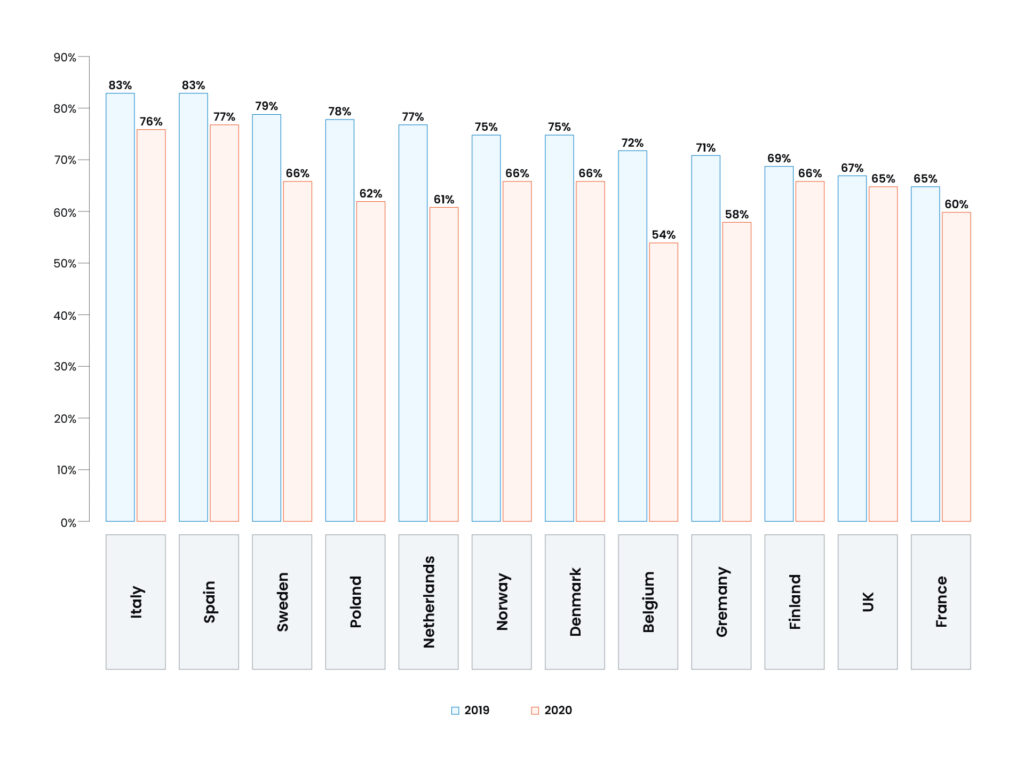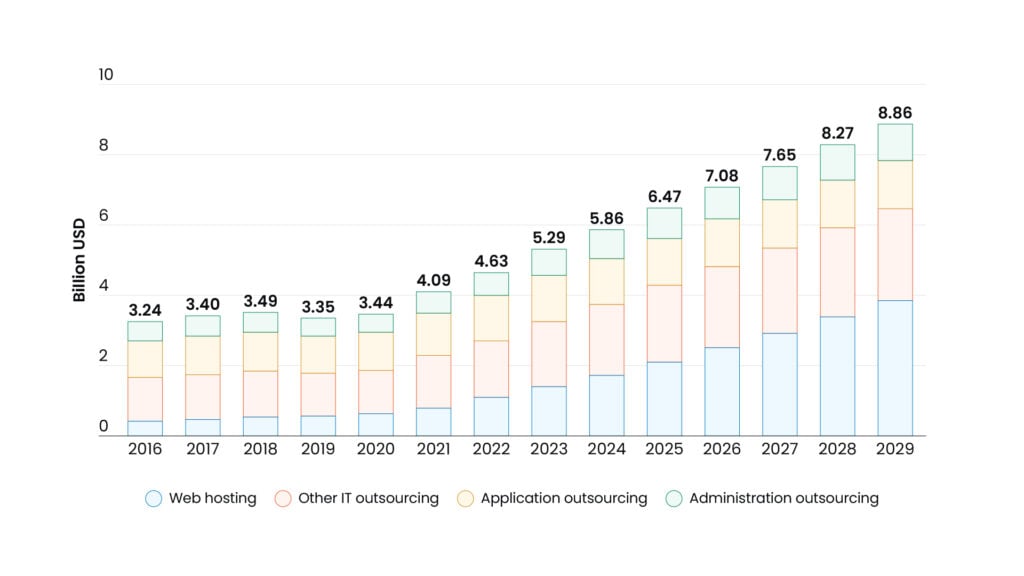ENG
- Branchen
- Finanzen
Nearshore-Softwareentwicklung für den Finanzsektor – sicher, skalierbar und Compliance-gerechte Lösungen für Banking, Zahlungsverkehr und APIs.
- Einzelhandel
Softwareentwicklung für den Einzelhandel – E-Commerce, Kassensysteme, Logistik und KI-gestützte Personalisierung durch unsere Nearshore-Engineering-Teams.
- Verarbeitende Industrie
Nearshore-Softwareentwicklung für die Industrie – ERP-Systeme, IoT-Plattformen und Automatisierungstools zur Optimierung industrieller Abläufe.
- Finanzen
- Was wir tun
- Services
- Technologien
- Kooperationsmodelle
Kooperationsmodelle passend zu Ihren Bedürfnissen: Komplette Nearshoring Teams, deutschsprachige Experten vor Ort mit Nearshoring-Teams oder gemischte Teams mit unseren Partnern.
- Arbeitsweise
Durch enge Zusammenarbeit mit Ihrem Unternehmen schaffen wir maßgeschneiderte Lösungen, die auf Ihre Anforderungen abgestimmt sind und zu nachhaltigen Ergebnissen führen.
- Über uns
- Wer wir sind
Wir sind ein Full-Service Nearshoring-Anbieter für digitale Softwareprodukte, ein perfekter Partner mit deutschsprachigen Experten vor Ort, Ihre Business-Anforderungen stets im Blick
- Unser Team
Das ProductDock Team ist mit modernen Technologien und Tools vertraut und setzt seit 15 Jahren zusammen mit namhaften Firmen erfolgreiche Projekte um.
- Unsere Standorte
Wir sind ProductDock, ein Full-Service Nearshoring-Anbieter für Softwareprodukte mit Hauptsitz in Berlin und Entwicklungs-Hubs in Lissabon, Novi Sad, Banja Luka und Doboj.
- Wozu Nearshoring
Wir kombinieren Nearshore- und Fachwissen vor Ort, um Sie während Ihrer gesamten digitalen Produktreise optimal zu unterstützen. Lassen Sie uns Ihr Business gemeinsam auf das nächste digitale Level anheben.
- Wer wir sind
- Unser Leistungen
- Karriere
- Arbeiten bei ProductDock
Unser Fokus liegt auf der Förderung von Teamarbeit, Kreativität und Empowerment innerhalb unseres Teams von über 120 talentierten Tech-Experten.
- Offene Stellen
Begeistert es dich, an spannenden Projekten mitzuwirken und zu sehen, wie dein Einsatz zu erfolgreichen Ergebnissen führt? Dann bist du bei uns richtig.
- Info Guide für Kandidaten
Wie suchen wir unsere Crew-Mitglieder aus? Wir sehen dich als Teil unserer Crew und erklären gerne unseren Auswahlprozess.
- Arbeiten bei ProductDock
- Newsroom
- News
Folgen Sie unseren neuesten Updates und Veröffentlichungen, damit Sie stets über die aktuellsten Entwicklungen von ProductDock informiert sind.
- Events
Vertiefen Sie Ihr Wissen, indem Sie sich mit Gleichgesinnten vernetzen und an unseren nächsten Veranstaltungen Erfahrungen mit Experten austauschen.
- News
- Blog
- Kontakt

04. Juni 2025 •7 minutes read
Digital transformation in the retail sector in Sweden 2025: Key trends and outlook
ProductDock
Swedish consumers are known for being early adopters of innovation, particularly when it comes to digital solutions that make their shopping experiences easier and more enjoyable. As consumer expectations evolve, traditional brick-and-mortar stores are adapting to a more digital omnichannel approach. From tailored e-commerce platforms and mobile apps to AI-driven personalization tools, point-of-sale (POS) systems, supply chain management solutions and data analytics, retailers use software solutions to navigate the digital age and stay competitive.
With the number of shoppers expected to increase in the coming years, understanding emerging trends is essential to succeed in this competitive market.
The rise of e-commerce and omnichannel experiences
Historically, the Swedish marketplace has been dominated by physical shopping and domestic brands. However, in recent years, particularly since the global pandemic, e-commerce has surged, growing by 40% since 2020.
In fact, Sweden leads the Nordic region in e-commerce, with online sales making up about 14% of all retail sales in 2023. According to PostNord, around 9 in 10 Nordic consumers engage in e-commerce.
To respond to trends, retailers must provide cutting-edge e-commerce platforms that deliver a smooth and engaging user experience. These platforms should be customer-centric, featuring intuitive navigation, mobile responsiveness, and multiple payment options to cater to varied customer preferences.
An example of how retailers are modernizing the customer journey is the implementation of camera-free, hands-free checkout solutions. This allows customers to simply place all their items in a bag, let the checkout device scan them, review the purchase, and go. The app interacts with the checkout system, automatically processing the payment without the need for customers to take out their phones or credit cards. It’s a convenient solution that makes shopping effortless and enjoyable.
However, achieving this level of modernization comes with challenges such as high development costs, slow implementation, and developer shortages. To overcome this, companies turn to nearshoring. For example, the nearshore team helped this company build a native iOS and Android app, including SDKs for retailers. This approach enabled retailers to improve their digital capabilities without the need for extensive in-house development.
Reflecting on that collaboration, Dr Nino Raddao, equity partner, highlighted what stood out most:
“I was amazed at their agile mindset, company culture, and motivated and experienced team.”
Despite the growing dominance of online shopping, Swedes still value the in-store experience. This makes it essential for retailers to deliver a seamless shopping experience across all channels. Software development offers retailers the opportunity to bridge the gap between digital and physical shopping experiences by creating user-friendly e-commerce platforms, mobile apps, and integrated systems that ensure a true omnichannel experience for customers.
Research shows that omnichannel customers shop twice as often and spend more money than those who shop through a single channel.
Yet, creating a seamless omnichannel experience has its challenges. Retailers must assess their existing infrastructure, identify strengths and weaknesses, and pinpoint areas for improvement to develop a comprehensive strategy that delivers consistent, high-quality experiences across all platforms.
To deliver a unique shopping experience, many retailers are adopting advanced POS systems. Integrating these systems into current IT architecture can support an omnichannel strategy by synchronizing sales, inventory, and customer data across physical stores, e-commerce platforms, and mobile apps. POS systems help manage all operational activities, including sales, checkout, customer service, and stock management. This integration is key to reducing supply chain inefficiencies, offering visibility, transparency, and effortless management of all locations from a single platform.
According to the Director of Technology at Adevinta, Ingo Bartel, utilizing technology effectively has been a key to improving and maintaining their business operations. By optimizing end-to-end systems and enriching existing business areas, the company has accelerated time to market and ensured seamless performance. Thanks to the collaboration between their IT team and business and functional stakeholders beyond product and technology, Adevinta has strengthened its platform within company constraints. This alignment ensured continuous innovation, scalability and efficiency in delivering business value.
“Our nearshore IT team managed the project efficiently, ensuring an effective workflow. Their linguistic flexibility and genuine interest were noteworthy. The outcomes and quality of the work were on par with those of our internal teams.”
Peter Laufer, Director of Engineering, Adevinta

Source: Postnord E-commerce in Europe
AI and machine learning shaping the future of retail
Personalization has become a key driver of customer loyalty, as everyone wants to feel seen and heard. When shoppers feel valued, their connection to a brand strengthens, increasing the likelihood of repeated purchases.
To achieve that level of personalization, retailers are increasingly turning to AI and machine learning, leveraging their ability to collect and analyze vast amounts of customer data. The growing importance of this trend is reflected in the fact that around 71% of retailers are investing in AI-powered personalization.
AI-driven solutions allow retailers to analyze shoppers’ behavior in real-time and deliver personalized promotions and product recommendations across websites, apps and social media. Beyond personalization, AI also streamlines decision-making by automating routine tasks and optimizing inventory management. By integrating these technologies into their existing platforms, retailers can implement dynamic pricing strategies and improve real-time customer engagement.
“The challenge in expanding AI-driven solutions in Sweden, but at the same time, an opportunity, is the adoption of simple and usable tools. These to be ‘embedded everywhere’ so it becomes a ‘commodity’. To strengthen the growth of AI solutions, especially as an IT consultant working with clients in Sweden, one approach is to focus on ‘Explainable AI’. This has already begun to be adopted, helping to make AI feel more relevant and understandable in business operations.”
Anders Norlin, Strategic Advisor and Venture Builder
Need for transparency, efficiency and automation
From the moment an order is placed to the final delivery, consumers expect full transparency and support. Whether tracking a shipment or understanding a product’s origin, they demand instant access to information.
To meet these expectations, retailers in 2025 will need to modernize their supply chains to ensure real-time updates and operational efficiency. This demand for transparency is driving retail companies to invest in advanced logistic software, supply chain management solutions and CRM tools. Combined with data analytics and predictive modeling, these technologies help retailers optimize stock levels, ensure product availability, minimize waste, and reduce costs. At the same time, they enhance the customer experience by enabling real-time shipment tracking, providing accurate updates, and streamlining the entire purchase process.
An example of how innovative technologies drive efficiency is a multinational fashion retail company, operating brick-and-mortar stores across 18 European countries, alongside a growing e-commerce platform. As part of its major digital transformation, the company implemented the MuleSoft Anypoint Platform as its central integration layer for all interfaces within the company. Due to shifting business directions, the demand for new integrations grew, pushing the company to expand the MuleSoft capabilities. Thanks to their IT team’s expertise, they improved the website interface, ensuring seamless connectivity and efficiency across both online and offline operations.
However, as retailers collect vast amounts of data, their digital platforms become more vulnerable to cyber threats. In Europe, where cloud platforms are widely used, the most common threats reported include credential harvesting (28%), extortion (24%) and data leaks (16%). This makes data security a top priority in 2025.
Retail companies must implement robust security measures to ensure their systems comply with data protection regulations and enforce secure data protocols. In Europe, for example, software must adhere to important regulations such as the General Data Protection Regulation (GDPR), the Cybersecurity Act and the Directive on Security of Network and Information Systems (NIS2).
Challenges and opportunities in the Swedish retail market
One of the biggest challenges facing Swedish retailers in today’s digital age is the pressure to adapt quickly and compete with digital-native companies that have already optimized their e-commerce platforms and advanced customer engagement strategies. This involves integrating physical and online channels, building a robust technological infrastructure, and ensuring consistent resources and maintenance.
These challenges are further intensified by financial constraints from COVID-19, supply chain disruptions due to the war in Ukraine, Sweden’s high inflation, and shortages in IT resources. As a result, retailers are under pressure to find cost-effective and high-quality solutions, which is why they turn to outsourcing software development. In fact, the outsourcing market in Sweden is projected to grow at an annual rate of 8.6% from 2024 to 2029, reaching a volume of USD 8.896 billion by 2029.

Source: Market study: The Swedish market for IT services, Open Trade Gate Sweden, October 2024
Data protection is another critical challenge. As retailer companies handle sensitive customer information, such as personal data and payment details, ensuring robust security measures is a must. Failure to implement data processing can lead to security breaches, legal consequences, and harm to reputation.
However, despite these challenges, Sweden remains one of the world’s most technologically advanced countries, offering great opportunities for digital transformation in the retail sector. E-commerce already accounts for at least 1% of the total turnover of technologies used in the country, and this figure is expected to rise as digital solutions continue to shape customer behavior.
Considering the unprecedented growth in the software sector within the Nordic region, including Sweden, Norway, Denmark and Finland, retailers have the unique opportunity to leverage cutting-edge software tools, AI-driven analytics and data solutions to personalize the customer experience and streamline their supply chains.
Conclusion
The rapid evolution of e-commerce, omnichannel experiences, AI-driven personalization, and supply chain automation are transforming the retail industry. While retailers face hurdles such as IT shortages, data security risks, and financial constraints, the demand for innovative digital solutions continues to rise.
Sweden’s position as a leader in digital innovation presents significant opportunities for retailers willing to invest in smart technologies. Advanced retail solutions are driving automation, data-driven decision-making, and personalized customer experiences, creating new opportunities.
As these technologies become deeply embedded in retail operations, companies that embrace these innovations will gain a competitive edge.



